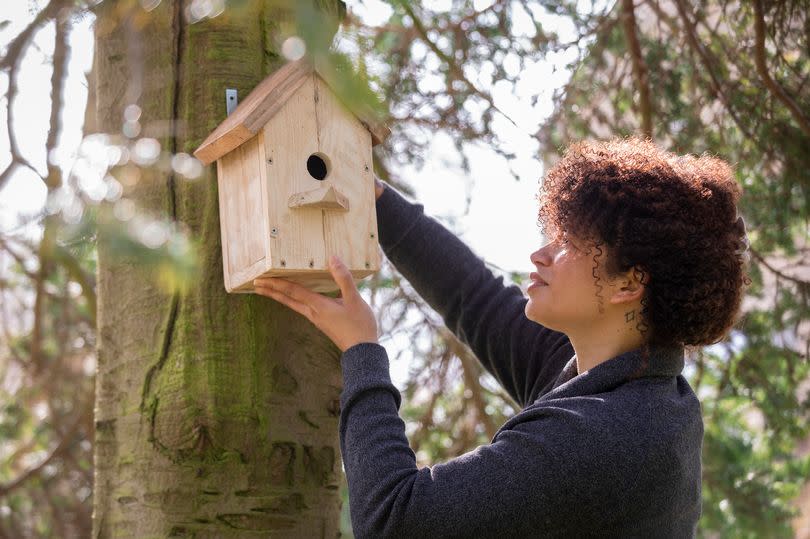Households are being urged to get their bird boxes ready for the approaching month of February, as birds begin their search for nesting spots.
According to the experts at Gardeners’ World, timely preparations are essential for supporting local birds during the breeding season – and have given anyone who has a nest box in their garden some key advice.
“Clean out nest boxes to make way for prospecting birds, which usually start looking for places to raise their young in mid-February,” GardenersWorld.com recommended.
READ MORE: Buckingham Palace announces royal baby news after premature arrival with adorable first photo
ADVERTISEMENT
This is essential to ensure a safe and hygienic environment for birds, with gardeners told to remove any old nesting materials, parasites or debris. Furthermore, for those thinking of installing new nest boxes, positioning is crucial.
The experts suggest placing them in areas shielded from harsh weather and direct sunlight, ideally facing northeast. They add that it’s never too late to put up a new box since birds continue to look for appropriate sites.

The advice doesn’t stop at nest box preparation; as February is highlighted as an imperative month for gardeners to engage in wildlife support activities. Suggestions include leaving food out for hedgehogs and offering specific hedgehog-friendly meals during cold periods.
ADVERTISEMENT
Planting wildlife-friendly hedges offers shelter and sustenance to a variety of species, including birds and insects. Buying flowers such as crocuses and primroses can be beneficial to pollinators like bees emerging from hibernation, reports the Express.
Finally, the experts warn against disturbing compost heaps, as this could potentially harm hibernating creatures like frogs, newts, and slowworms.
Gardener’s World stated: “Most garden wildlife is still be hibernating in February, but you may spot early bumblebees or hedgehogs that have emerged early in mild weather. They will have gone without food for months, and will be hungry.
“The best way to attract more wildlife to your garden is to create habitats where wildlife can feed, sleep and hibernate, such as digging a pond, growing plants for bees or making a making a log pile. Once you’ve created a few wildlife havens, why not install a wildlife or nature trail camera to find out which creatures come and visit.”
By focusing on these actions, gardeners can create thriving habitats that benefit wildlife throughout the year. A little preparation now will pave the way for a bustling garden teeming with life as spring approaches.
EMEA Tribune is not involved in this news article, it is taken from our partners and or from the News Agencies. Copyright and Credit go to the News Agencies, email news@emeatribune.com Follow our WhatsApp verified Channel




